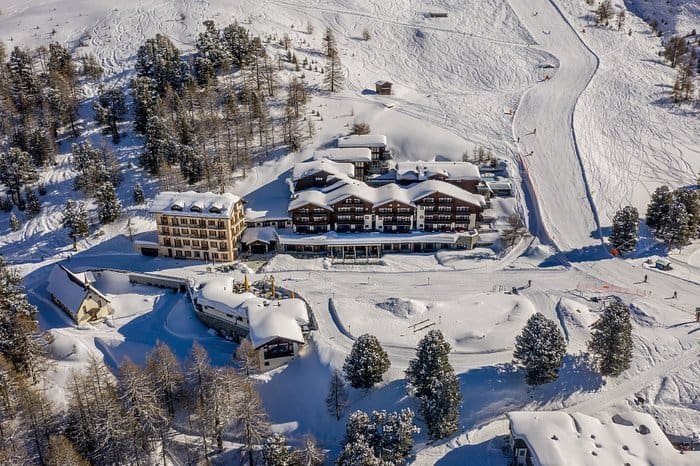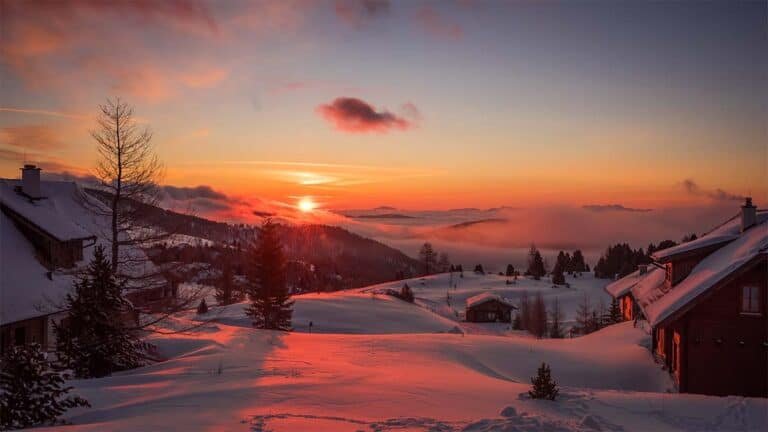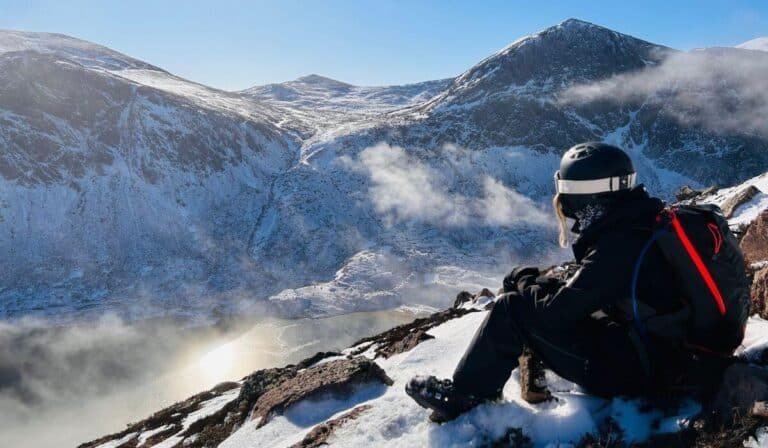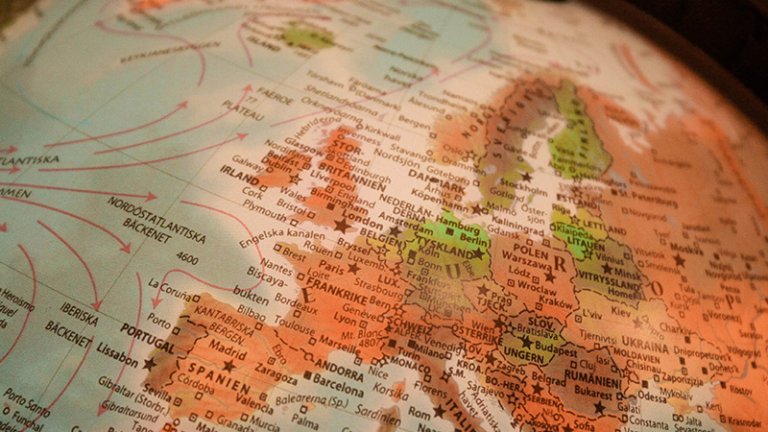Wanting To Give Off-Piste Skiing A Go? We’ve got all the info you need to get started!
Skiing off-piste can be an incredible experience – one of the truest ways to explore the untamed wilderness of the great outdoors.
From feeling the adrenaline rush of conquering steep terrain or sailing through virgin powder fields, to discovering hidden gems tucked away among peaceful, snow-covered landscapes, skiing off-piste is a thrilling adventure into the unknown.
However, progressing from groomers to the backcountry can be quite daunting, so we’ve put together this article to cover every important aspect and question you may have when it comes to venturing off-piste.
So, what distinguishes on-piste from off-piste skiing? Why do people do it? How dangerous is it, and how can you stay safe? What equipment do you need, and do you need an entirely new skiing technique to try it? We explore all this and more below!
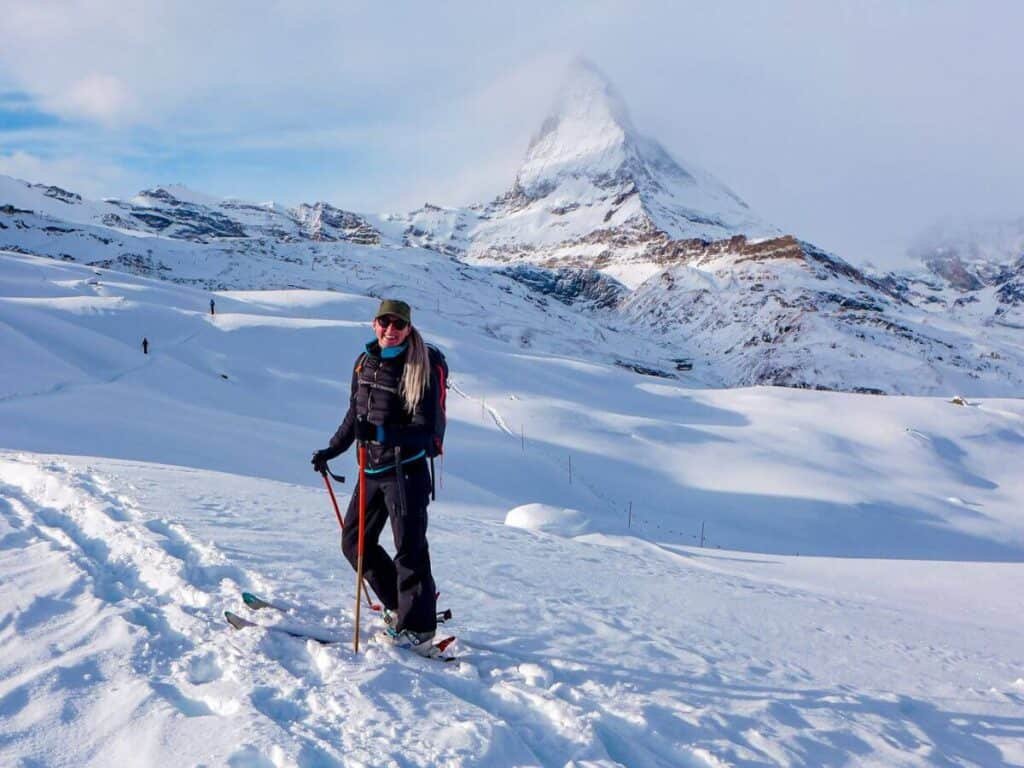
What Does Off-Piste Mean In Skiing?
‘Off-Piste’ in French means ‘off-track’. So it is an all-encompassing term for skiing outside of marked trails, or pistes. So, basically the whole untouched rest of the mountain. This can include steep terrain, bumpy ground, through trees, deep snow and even glacial travel.
Depending on where you are or the context, this type of skiing may also be referred to as ‘backcountry skiing’ or ‘freeriding’. These terms can sometimes be used interchangeably. However, whilst there are subtle differences, these all refer to skiing done outside the boundary of groomed, marked ski slopes.

What is the Difference Between Backcountry and Off-Piste Skiing?
In some instances, off-piste skiing and backcountry are used interchangeably. However, whilst you can ski off-piste within a resort using chair lifts to ski down outside of the mark pistes, backcountry skiing typically refers to going further out, beyond the resort boundaries.
In North America, skiing outside the resort boundary is called backcountry skiing. Areas within the resort that lack piste markers or grooming are often called off-piste. In Europe, it’s simpler—anything outside the marked and groomed slopes is considered off-piste, however far outside of the resort you are.
Ski touring has gained popularity as a way to access these backcountry areas without relying on lifts. It involves ascending the mountain with specialised ski equipment that enables you to climb up and ski back down!

Why Ski Off-Piste?
Skiing off-piste can be an incredibly thrilling and fun adventure, that just like skiing itself, people can enjoy for a wide variety of reasons:
💪 Challenge and Adventure: It presents a significant challenge compared to resort skiing. The variable nature of unmarked terrain tests your riding skills and can offer a demanding workout and the chance to push personal limits.
🏔 Stunning Scenery: The backcountry provides access to beautiful, untouched landscapes and hidden pockets of the mountains inaccessible from the main slopes.
🧘 Peace and Serenity: Away from the crowded resort trails, the tranquility of the natural surroundings is a strong appeal for those seeking peace, as the fewer people allow for a more personal and contemplative experience. You and your friends can truly soak in the awe and wonder the mountains inspire.
🏂 Freedom and Exploration: The freedom to carve your own paths through fresh, untouched snow, is unlike anything else. The wide-open landscapes encourage exploration beyond the limited areas covered by ski resorts, and that sense of discovery can be incredibly addictive.
🎆 Thrill and Excitement: The adrenaline rush and thrill, from floating through fresh powder fields and skiing untouched & uncharted routes in a kaleidoscopic array of different environments is exhilarating.
However, whilst all of this is true and off-piste skiing can be great fun it must be reiterated that it comes with more inherent risks. Which we will go into in the following sections.
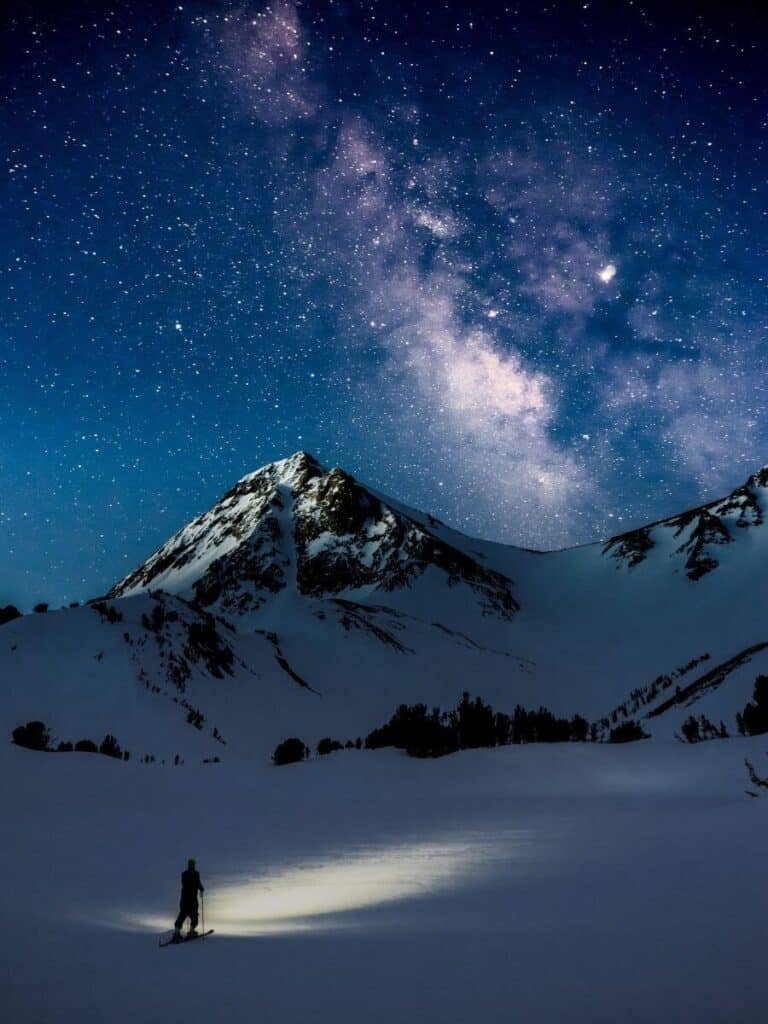
Is Skiing Off-Piste Dangerous?
Off-piste skiing is undeniably thrilling, yet it comes with a unique set of risks that require careful consideration. Unlike the managed slopes of a ski resort, off-piste terrain is untamed and unpredictable, presenting challenges such as avalanches, cliffs, and other natural obstacles.
Understanding these risks and taking proactive safety measures are essential for anyone venturing ‘out of bounds’.
The Main Dangers:
Avalanches: These are perhaps the most significant hazard when skiing off-piste. Avalanches claim over 150 lives globally each year, making it crucial to research snowpack conditions, weather forecasts, and avalanche reports for your intended skiing area.
Natural Obstacles: There are a lot of potential hazards in the mountains, such as cliffs, trees, rocks, and crevasses (if you are skiing on a glacier). Being able to identify safe routes and recognise potential hazards to avoid in the terrain is vital to prevent accidents.
Remote Locations: Potentially skiing out and away from resort, or ski-touring in much more remote locations means being further from immediate help in case of an accident.
It’s essential to have local emergency contacts at hand and to carry a reliable communication device, first aid kit, bivvy bag, spare clothing, and sufficient food and water.
Mountain guides are equipped with specific training to lead groups safely in the backcountry. So ensure they accompany you until you have the proper training, experience and knowledge to go without them.

Safety Tips for Off-Piste Skiing
The safety precautions needed before going off-piste will depend on the situation. Just veering off a gentle piste for a few turns, with a clear view of where you rejoin, is vastly different from planning a multi-day backcountry excursion far from anywhere.
However, always be humble in the mountains, or they will humble you. Even just popping off the side of the piste could be very dangerous, especially if done in complete ignorance.
Even in this circumstance, you should always ask resort officials & guides beforehand to check where the ‘safe’ areas are. And make sure you are confident in your ski ability before leaving the groomed slopes.
However, in general, before venturing into the off-piste it is essential to consider the following:
Training and Equipment
Priority number one before heading further into the backcountry is taking an avalanche safety course. This can provide the essential knowledge necessary to navigate these terrains safely. Equally important is carrying the right gear and knowing how to use it, including a transceiver, shovel, and probe.
Mountain Guides
Hiring a mountain guide can vastly improve safety. These professionals are trained to assess risks, navigate tricky terrains, and react appropriately in emergencies. Until you have gained adequate experience and knowledge, a guide is invaluable.
Planning and Communication
Never venture off-piste without a clear plan. Use maps, locals, guidebooks or online resources to help select your skiing area and to plan your route. Also, always inform someone of your plans, including expected return times. This ensures that someone will know to look for you if things go awry.
Never Go Alone
Being part of a group is crucial for safety when you’re off-piste in isolated areas. Skiing alone on-piste isn’t ever recommended either. Even in a controlled resort, it’s good to have a friend nearby if something goes wrong.
However, this becomes imperative in the backcountry. groups of at least 3 & and no more than 5 is the standard. It’s also important that everyone in the group is a competent rider and knows what to do in an emergency.
The Rewarding Side of Off-Piste Skiing
Although this all sounds doom and gloom, and you may now be wondering why anyone would want to ski away from the friendly pisted slopes, don’t panic.
Despite the inherent risks, off-piste skiing offers an unparalleled sense of adventure and freedom. With the right training, equipment, knowledge and preparation you can drastically reduce these risks and enjoy rewarding, exhilarating and fulfilling experiences.
Just remember, there’s no room for ego in the mountains. To stay safe and enjoy the wonders they have to offer, you have to respect them. Stay humble.
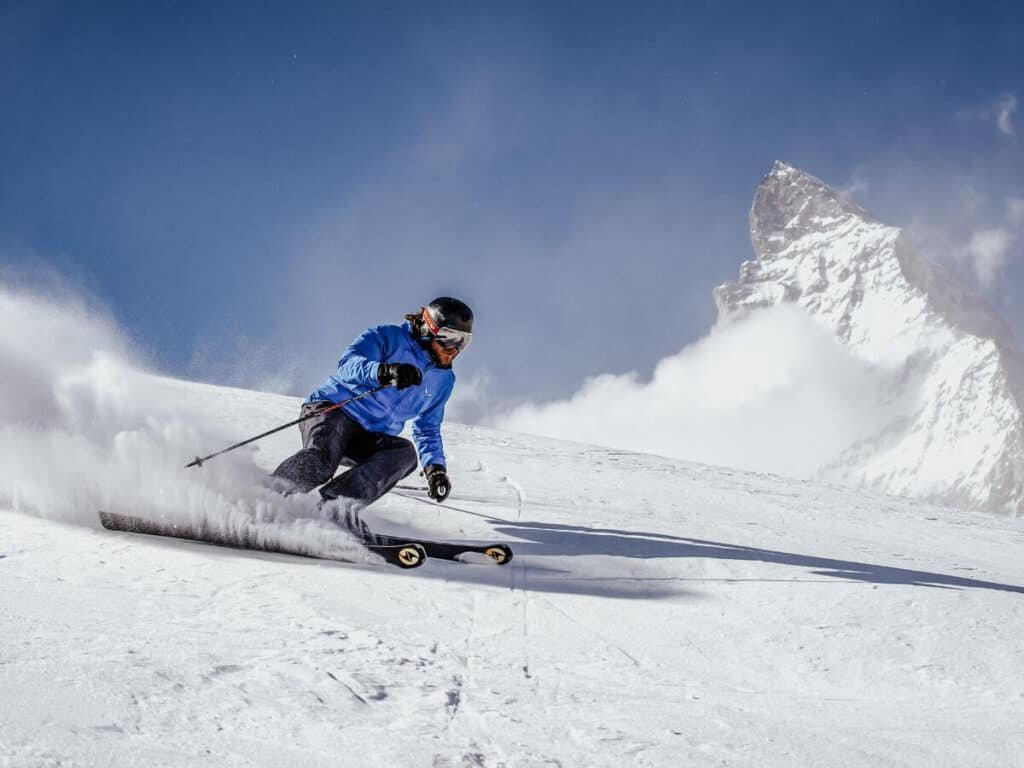
Skiing Technique: How Hard is Off-Piste Skiing?
Off vs On-Piste
A common misconception is that you need a different set of skills and techniques for skiing on-piste and off-piste. In reality, this is not the case.
Whilst it is certainly more challenging, all the fundamental skills you learn and incorporate on the piste are transferable to variable terrain. Your body position, the fundamental movements and transference of weight etc…
In fact, the unpredictable and variable nature of this terrain makes it a great place for identifying any chinks in your armour: areas that you may need to improve. Therefore, it is a great place to help your technique.
If someone is getting a little big for their boots on the piste, chucking them in a little variable terrain is often a great way to neutralise their ego!
How Can Skiing Off-Piste Improve Piste Performace?
The firmness, consistency, uniformity and ‘trustworthiness’ of a pisted slope can often allow skiers to get away with subpar or lazy technique (not that there is anything bad about that if you are safe and having fun on piste!).
Whereas, the unpredictability of variable terrain, requires you to be more adaptable and have much more of a mastery of all of the fundamental skiing movements and techniques. You can not rely on the comfort of the piste, as no turn is going to feel the same, you have to be constantly making micro adjustments as you ski.
If you viewed it like the levels on a DJ’s mixing table, different elements/ tools in your skiing arsenal might be required in varying degrees, depending on the snow conditions you are skiing. Little tweaks might need to be made at any given moment in off-piste terrain to stay balanced and not fall over.
A little more weight on this ski here, lean a little further back here, forward here, more/ less edge here, quicker rotation here, incline more, bend the needs more here… and so on.
So in many ways, off-piste skiing can help improve your skiing technique, make you more confident and versatile on the mountain and help you to develop a better flow in your performance!
Of course, this takes time, but the only way to get better at it is to put the miles in and get on in there!
However, before heading out of bounds for the first time, it’s wise to take a lesson with an expert. They can guide your initial excursion to ensure safety and identify areas for improvement, making skiing in varying conditions safer and more enjoyable.

Off-Piste Skiing Tips for Beginners? How to Get Started.
Get a Lesson To Identify Your Weaknesses
Skiing in variable terrain is more challenging than skiing on a freshly groomed piste, so ensuring that your basic ski technique is pretty solid is essential.
Use The Piste
Once you’re feeling more confident in your technique start by tackling more difficult terrain on the piste or by using the side of the piste for variable conditions (make sure to check these areas are safe beforehand).
You can also head out early in the morning after a fresh snowfall, pistes are usually groomed at the end of the day, so an early start can offer some freshly groomed pistes with a nice layer of fresh powder.
Try Marked Off-Piste
Marked off-piste is an area that is avalanche controlled and marked with poles but not pisted. This gives you the experience of skiing variable backcountry terrain with the same safety precautions as the piste.
If your resort has them, skiing on marked off-piste trails is also a great way to dip your toe into the wider world of all-terrain skiing, however, make sure you feel confident in your ability before you commit to these types of slopes.
Plan, Prepare, Practice
If you are feeling ready to dive into the backcountry, then invest in some avi gear (avalanche safety) and do some training on how to use all of it. Make sure that you could be depended on in an emergency situation.
Also, always have a plan before venturing off-piste. It’s crucial to consult a guidebook, local expert, or other resources to identify the best skiing areas, terrains to avoid, and expected conditions.
Never Go Alone
For your first big excursions away from the piste and perhaps the resort, hiring a guide to keep you and your group safe is a great option. At the very least, make sure that you aren’t just going out by yourself, and make sure that you trust the ability of those you choose to venture out with.
Never ski alone, the best number of people to ski off-piste with is a minimum of 3.

Where To Ski Off-Piste
Powder skiing can be found all over the world and the best place is the one you are most comfortable with. One of the major factors in staying safe whilst skiing in the backcountry is knowing the area in which you are skiing.
Some of the well-known places for it are Austria, France, Switzerland, Japan, Canada, and Argentina. In Europe, you will find well-maintained ski resorts with plenty of suitable marked & unmarked off-piste terrain.
What is the Difference Between Piste and Off-Piste Skis?
Although with good technique you should be able to ski anything with a pair of piste skis, skis designed specifically for off-piste use can make life easier in certain conditions.
Piste skis are generally narrower, heavier and their shape is designed for quick carving on firm groomed slopes. They have a ‘camber’ shape, where the tip & tail are naturally touching the snow and the centre is raised up, providing an extra spring (like a trampoline) for sharper turns.
This is compared with more off-piste skis which are wider underfoot and have a “rocker” or “reverse camber” shape, with ends that curve upward away from the snow. This design specifically helps in deeper snow as it allows the skier to stay on the surface and ‘float’ more easily.

Off-Piste Ski Equipment List
Skis
There is a wide range of choices when looking at off-piste skis and it all boils down to what you want to get out of them.
All Mountain
If you are looking for something all round that will perform well on the piste as well as off-piste, then you’re going to want an all-mountain ski. It pretty much does what it says on the tin. All mountain skis tend to be slightly wider and lighter than piste performance skis and often have a rockered tip, allowing them to float more easily.
Powder
Powder skis are often wider and longer than piste skis, with either a full rocker/reverse camber or a combination of camber and rocker to help you float in the deep powder.
However, they will not give you the best on-piste experience. So, if you are someone that loves getting high performance, carvy turns on piste, but who also loves effortlessly floating on powder days… you’re probably going to want two sets of skis.
Touring
You can also create a touring set-up on either lightweight touring skis, freeride or all mountain skis. This gives you much more freedom to roam. The lightweight skis tend to be favourable for those who are more about the uphill, freeride and all mountain skis are preferable for the downhill.
Our advice is if possible try out a variety of different styles of skis until you find the one that best fits your budget, style of skiing and location. Not all resorts are built the same, if you are based in Europe you might benefit more from an all-mountain ski, whereas places like North America and Japan which receive much heavier snowfall would get plenty of use out of big wide powder skis.
For more information on ski profiles and camber vs rocker check out this post on Wagner Skis

Poles
You can use your regular poles to ski off-piste, but if you are in deep snow it’s more beneficial to have poles with slightly bigger baskets. For something versatile, you can opt for extendable poles that you can change the length of depending on the type of skiing you are doing, or if you are touring up or coming down.
Ski Boots
As with skis, there is a huge choice of ski boots to accompany you on your freeride journey. Again this will come down to your budget, preferences, and style of skiing.
Freeride
For those who are opting for something to perform on-piste as well as off-piste a freeride boot will be the best option. These usually have a stiff enough flex for the piste and more comfort for variable snow. They also often come with a walk mode and some are compatible with all 3 types of binding: alpine, touring and pin.
Touring
Touring boots come in two types, performance and lightweight. As with touring skis, this setup will be more about the uphill than the downhill and is not the best option if your main goal is to enjoy those cruisy powder turns.
Outerwear
Ski Jacket & Trousers
You can wear your regular ski jacket and trousers for powder skiing but if your outfit is bulky and you are wanting to do lots of ski touring, you may want to consider something light that you can layer underneath.
Goggles & Gloves
Your piste goggles and gloves will work just fine, we like to always have a spare lens that can quickly be swapped if we know the weather may change during the day. Low-light lenses are really handy when those clouds come over.
We also tend to have a pair of thinner gloves for warmer days, plus always take a spare pair of gloves if we are out touring for the day. Nothing worse than if your gloves get wet whilst out in the middle of nowhere, cold hands suck!
Helmet
There may be a lot more tumbles than usual, especially when you are starting out, not to mention the extra dangers of rocks, trees, cliffs and crevasses. It is strongly advised to always wear a helmet when freeriding.
Avalanche Kit
Transceiver/ Beacon
This is your most important bit of kit, knowing how to use it can save a life, and perhaps that life will be yours. Having a reliable, easy to use transceiver that you are comfortable with is super important. This is also known as a beacon or a peep (or piep, which is a brand).
A transceiver is an electronic device that sends out a signal in order to be located, or to track other transceivers nearby. If someone is buried in an avalanche this is how they are located, everyone in the group needs to have and know how to use a transceiver. Your transceiver should be worn close to your body, underneath layers and not in your backpack so they can’t be ripped off during an avalanche.
Probe
Once your transceiver locates the position of the person you are searching for, you then need to probe, as they may be buried deep in the snowpack. A probe is used to find the person’s exact location and to see how far down is necessary to dig.
Shovel
It’s no use having a transceiver and probe to locate someone if you don’t have the tools to dig them out. A lightweight shovel with a detachable handle will fit perfectly in your backpack.
You can buy kits that include a transceiver, probe and shovel. Our favourite is the Mammut Barryvox, which is rated as one of the best on the market.
Learning how to properly use your avalanche safety kit, and then consolidating this by practising regularly with the people you ski off-piste with is vitally important. You want to make sure that everyone is comfortable with their gear and their roles during an emergency situation. All the gear and no idea can be fatal when backcountry skiing.
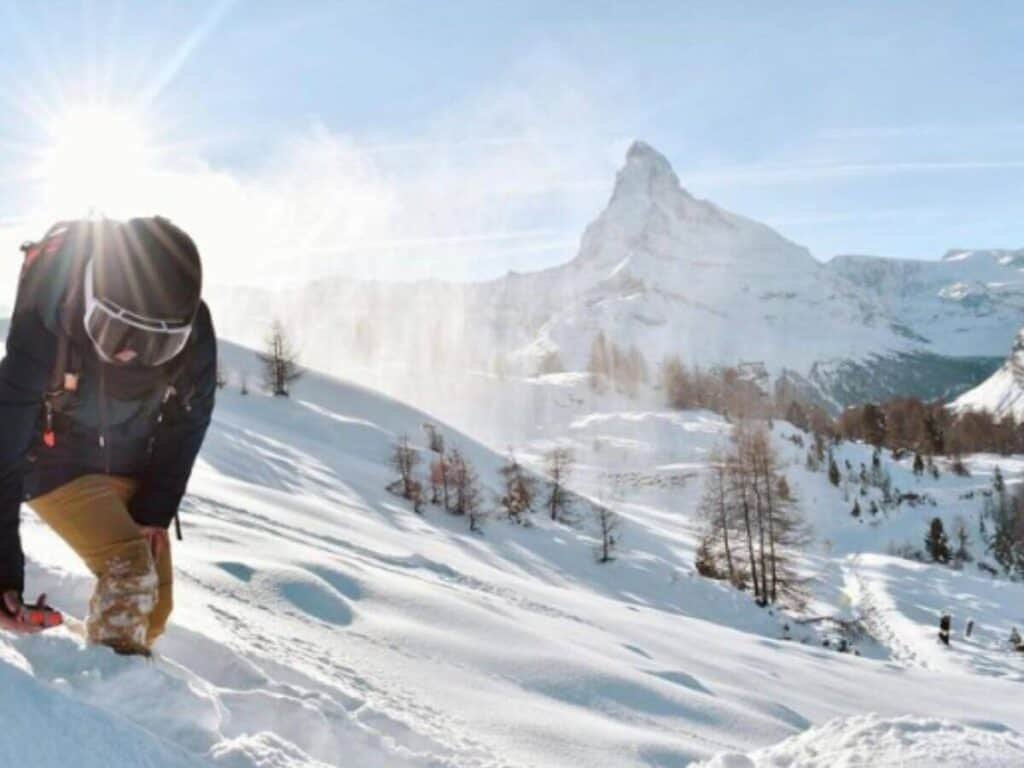
Backpack/Air Bag
There’s a lot of debate about whether air bags are a good idea for backcountry skiing or not. You would assume that they are a great idea, but the media has overinflated their capabilities as “the thing that will save lives”.
And while yes, this is true in some cases, it’s not true in all. Having an airbag doesn’t mean you can skip on all the other safety knowledge when it comes to powder skiing and unfortunately, this is what can happen.
People start to rely on their airbag rather than their risk assessment. We don’t want to sway you either way as we think skiing with or without an airbag is a personal choice. Do LOTS of research into the arguments for and against an airbag before making your decision.
Whether you opt for a regular backpack or one with an ABS system make sure it’s got everything you need in terms of size, weight, pockets, enough space to keep your avalanche safety kit and easy access to water.
First Aid Kit
Having a first aid kit when skiing off-piste is really important, you don’t know how long it could take for someone to get to you or for you to get down in an emergency. Having at least the basics and some understanding of how to use them in certain scenarios can stop a situation from escalating into a panic.
Bivvy Bag / Foil Blanket
If you find yourself in a situation where you have to wait for a long time in the snow, having a bivvy bag or a foil blanket will keep you warm in the meantime.
Extra Layers
The mountains are tricky places and the weather can change in an instant, having layers in your bag to put on, or space in your backpack for layers you need to take off can be essential. Hypothermia and hyperthermia are both things to be aware of at all times on the mountain, but especially when you are in remote locations.
Food & Water
If you are venturing far into the wilderness it’s always a good idea to carry snacks and water, or if you’re like us, on good weather days you’ll want to find a nice quiet spot for a picnic.
Insurance
Make sure your travel/ski insurance covers you in the off-piste. An airlift in a heli can be extremely costly if it’s not covered under your policy.

Avalanche Safety Basics
As well as learning how to use your avalanche safety kit, it’s important to learn about snowpack, how it forms, what to look out for and how to stay safe at all times. Just because you know how to use your gear, doesn’t mean you can just head out and ski anything. Different snow conditions can be fatal, even to mountain guides. It’s important to learn where is safe and where isn’t.
What Causes An Avalanche?
An avalanche is when a weak area of the snowpack collapses and slides downhill, taking with it the mass on top. Avalanches are the result of a snow layer collapsing and sliding down the slope.
The occurrence of an avalanche depends on four factors: a slope with enough inclination, snow cover, a fragile layer within the snow cover, and a trigger.
What Is A Snowpack?
A snowpack is the total amount of snow that has fallen in a given time, which is continuously deforming throughout the season due to temperature changes, resulting in multiple layers of snow from each snowfall. The weight of each snowfall compacts the layers. Each layer can be affected by different weather factors.
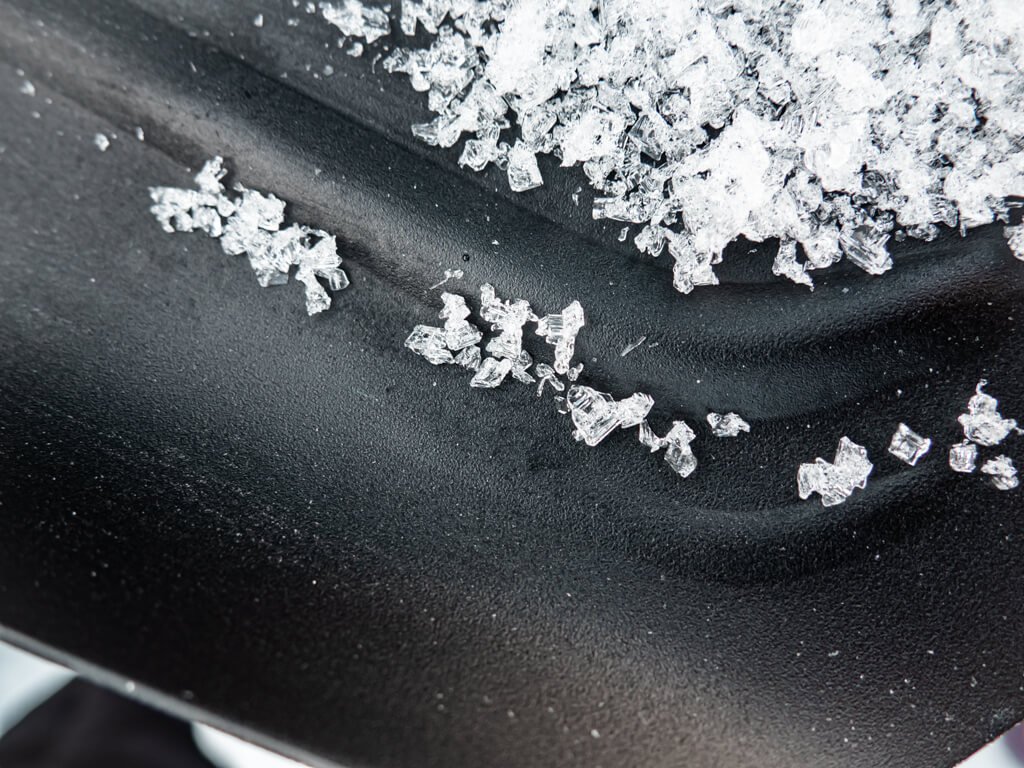
Off-Piste Advice From The Experts
The perfect powder day can become a day from hell in an instant. Finding yourself in an avalanche is a skier or snowboarder’s worst nightmare. But sometimes even when you think you’ve checked all the safety boxes, the unexpected can happen. So as well as our safety tips, I sought out off-piste advice from a few more experts.

Brian Farquharson
is an international mountain guide who runs avalanche awareness courses in the alps. Originally from Scotland, Brian moved to Switzerland 39 years ago and spends most of his time between Zermatt and the Bernese Oberland. Brian has been a mountain guide for 22 years and also guides in 8 countries around the world.
What Is Faceted Snow?
Faceting is when the snow crystalises rather than bonds together to form a strong layer, forming an almost sugar-like thin layer (sometimes almost naked to the eye). These fine unbonded grains are one of the major causes of avalanches.
Why Is Wind-Affected Snow An Issue?
As snowflakes fall they spin and grow. The spikes on snowflakes are known as legs, but when the snowflake falls through wind the wind breaks off the legs, which is called rounding. The legs are what bond the flakes together to form a snowpack.
- Fewer legs = less binding
- wind creates unstable crystals.
“People get caught up in powder fever and they are so eager to go off-piste that they don’t necessarily take all of the right precautions.”
Common Mistakes From Mountain Users:
One problem is people get a false sense of security. They’ll ski a run they’ve skied a hundred times and think it’s safe because they ski it often. Snow changes and the weather changes, no slope is the same every day.
People get caught up in powder fever and they are so eager to go off-piste that they don’t necessarily take all of the right precautions.
Is Avalanche Terrain Safer After A Slide?
These areas are called “After Avalanches”. The issue here is the area above the avalanche. The snow above also wants to break off and flow downhill, called a downhill creep.
With the previous avalanche, there is now nothing holding the snow above it up. 12% of avalanche victims are people caught in after avalanches. The best advice in this terrain is to still always treat it as if it will slide.
“The more skills and information you have the fewer bullets are in the chamber but don’t forget there will always be one bullet left”
! Never Become Complacent!

If you’d like to learn more from Brian you can purchase his book Avalanche Know How
For more about Brian or to book him for guiding or avalanche training head to:
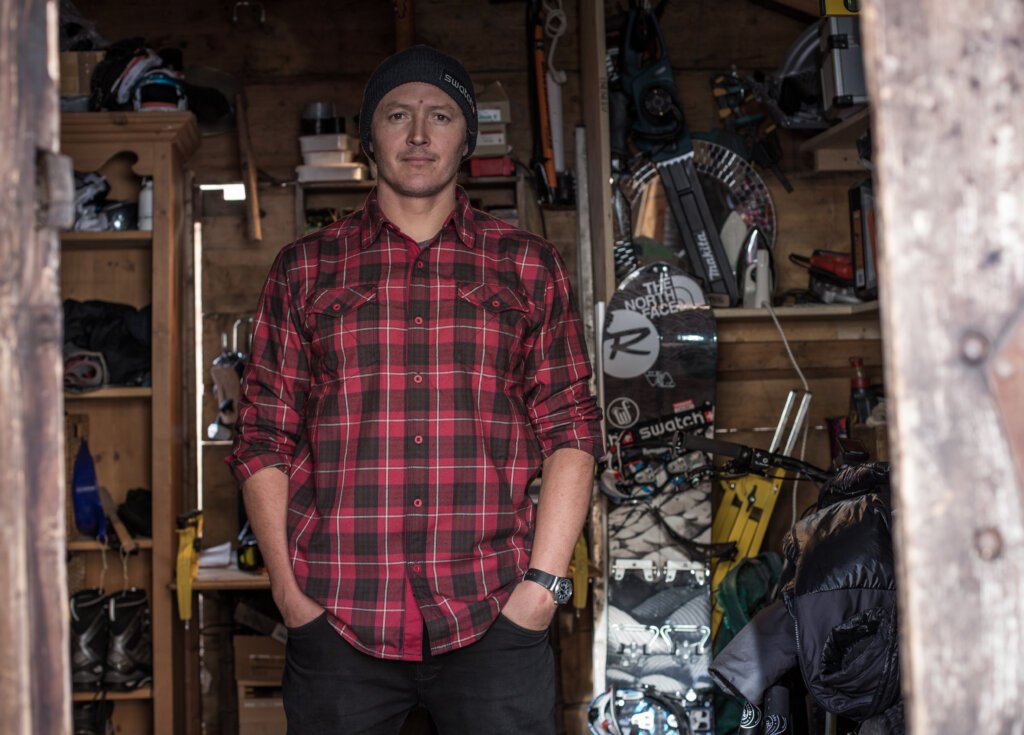
Xavier De Le Rue
is a French big mountain snowboarder, 4 x World Boardercross Champion, 3 x Freeride World Tour Champion and has lived in Verbier, Switzerland for the past 19 years.
Tell Us About Your Experience In Dealing With Avalanches.
In Verbier a couple of years ago I witnessed a large avalanche coming through “Rock n Roll couloir”.
I went straight to search the debris. Seeing someone buried to their waist with their airbag pulled I felt relief that they were not completely submerged. I went to check that they were fine before continuing the search.
It was my friend, and he was not fine, through the avalanche he had sustained a head trauma that ended his life. The avalanche slid in an unusual way, it was something I’d never seen before. They had to cross a pocket of snow to get to the entrance of the Couloir. This is what slid, I have never seen it slide on that scale in my whole time in Verbier.
The danger didn’t seem to be as clear that year, it was totally unpredictable. Usually, the snowpack heals but that year it didn’t seem to be healing. The problem with riding off-piste is that it’s more of a gamble than any other sport. Sometimes you can do everything by the book and still get screwed.
“The problem with riding off-piste is that it’s more of a gamble than any other sport. Sometimes you can do everything by the book and still get screwed.”
We always have a faceted layer but normally there is some sort of stability. That year we had no snow cover for so long so nothing was ridden, then it seemed like nothing was stable or predictable.
Slabs breaking on the steep faces of Verbier:

What Extra Precautions Can People Take When Riding Off-Piste?
Stick to low elevation or shallow slopes
Always ride one at a time from pitch to pitch.
Ride from point A to point B, safe point to safe point.
Treat every place as if it will slide no matter how safe it seems. This is something I always do and it should become part of your behaviour.
Only ride with people that you trust and who know how to use their safety equipment.
Turn back or stay home.

For more about Xavier head to https://www.xavierdelerue.com/

Sam Anthamatten
is an Alpinist, Mountain Guide and one of the world’s best freeriders. Born and raised in Zermatt.
I Spoke To Sam About The Unusually Dangerous Off- Piste Conditions In Zermatt in 2020/21:
We definitely faced a dangerous Winter Season 2020/21. For most of the season, the avalanche danger level 3 was constantly shown. A lot of regions were often changing to danger level 4 and we also had danger level 5 out of 5, which is rarely seen.
But Why?
So if we look back to the beginning of winter it was really dry from September – January, yes we got some snowfalls but they were really small and in between we had good weather, wind and cold temperatures. Low-tide snow years are more dangerous as a thin snowpack is weaker.
This is the perfect recipe for unstable layers, the snow crystals are refreezing and growing to plates/cups, which are not binding anymore, they become ball-bearing like. So we have a lot of really weak layers close to the ground and now it has been snowing heavily on top, often a big storm with warm temperatures can stabilise the whole snowpack, but during the 20/21 season the weak layers were too big. The result is a heavy snowpack with tension on top of a house of cards.
By digging a snowpit to check the different snow layers you can easily see the “Altschnee-Problem“ which lies in the lower snow layers. I think everyone who is skiing off-piste should do that!! Digging a snow pit reveals the weather during a season and its influence on the snow, which shows the architecture of the snowpack.
Now we only need to trigger the hotspot and the consequences are fatal! Avalanches can reach huge sizes because they slide to the ground. It’s not only a top layer, it’s the whole snowpack that collapses.
“The result is a heavy snowpack with tension on top of a house of cards. Now we only need to trigger the hotspot and the consequences are fatal!”
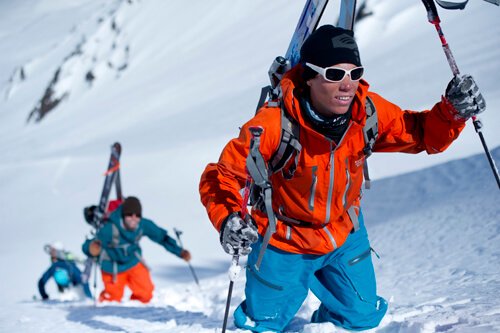
For more about Sam head to http://www.anthamattens.ch

Sam Parkes
is from the West Midlands, UK. He’s a Brevet Federal and has been in Zermatt for 10 years, skiing and teaching off-piste is his passion.
We spent an afternoon with Sam digging a snowpit, learning about the different snow layers and doing what is called a sliding block test.
Digging a Snowpit
We marked an area of around 1.5m x 1.5m and dug down to the floor.
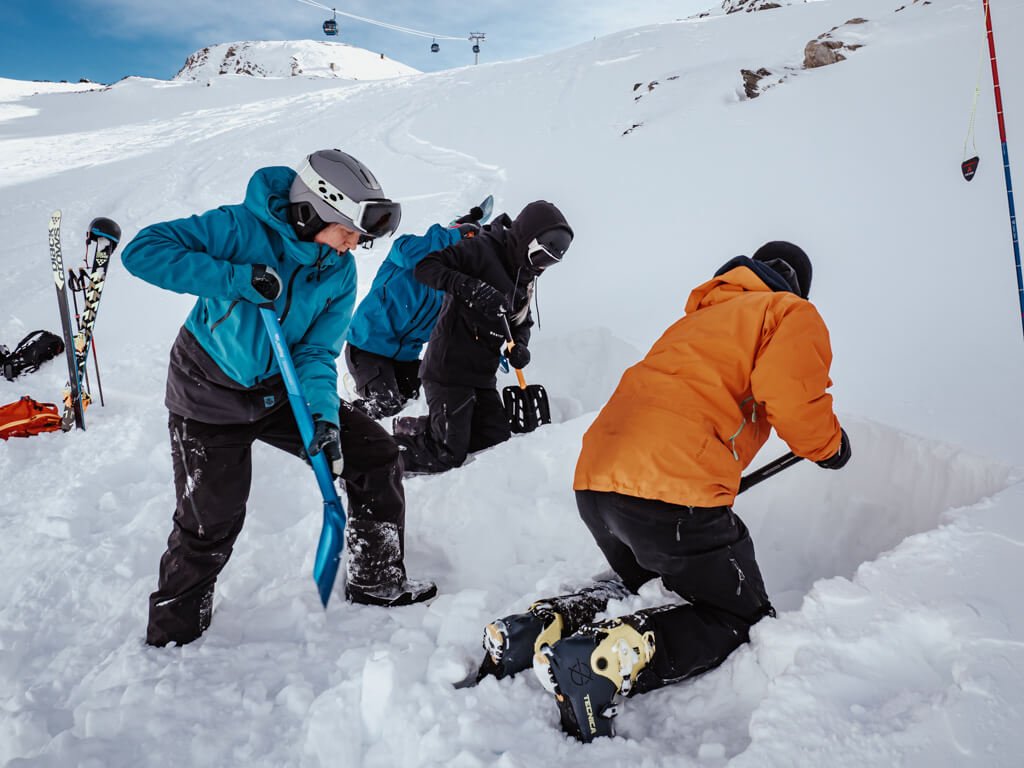
What Did We Find?
The top of the snowpack was nice solid compact snow, but further down we found a wind-affected and faceted area. Sam showed us how to spot the different layers by running a card from top to bottom and marking where we felt the consistency of each one change.
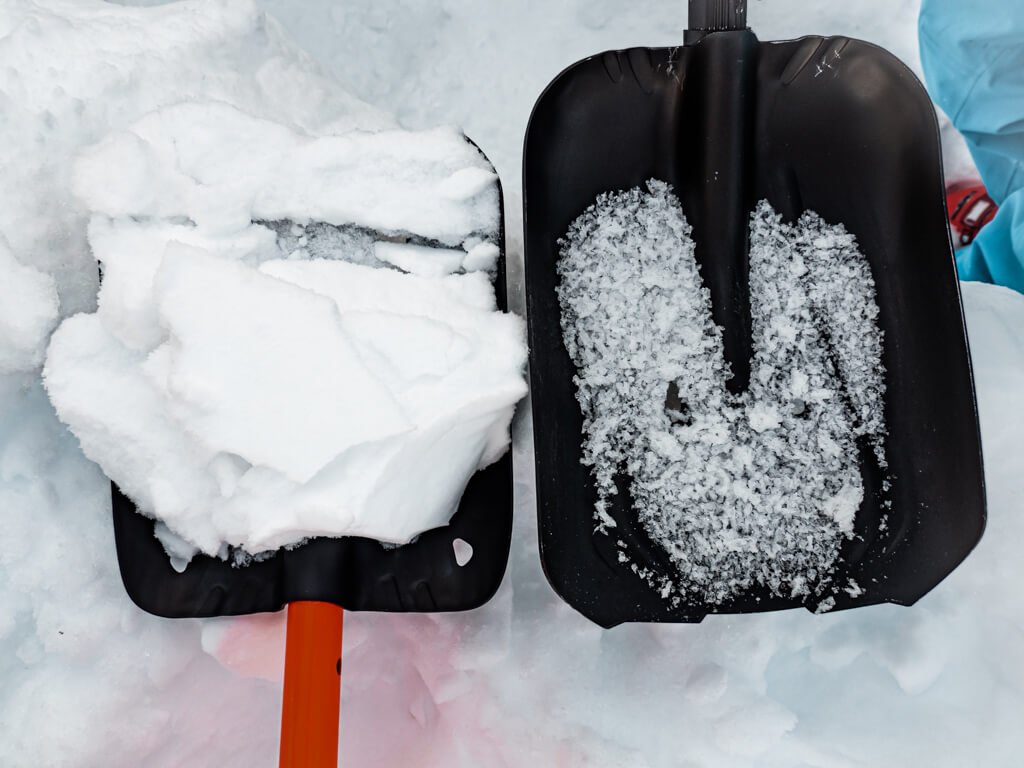
Is This Normal Sam?
It’s completely normal for there to be a faceted layer at the base, the issue is with how big that layer is. The larger it is, the more unstable it is.
Sam: “So do you want to do a sliding block test or an isolated column test?”
We all looked confused but after some explanation decided to opt for more digging! An isolated column test is where you isolate a small area or column from the rest of the snowpack.
Compression from the top in a series of taps is performed to see which layer fails and collapses the column. This can be done by placing a shovel at the top of the column and tapping with increased pressure until it fails.
A sliding block test is where you isolate an even larger area, big enough to stand on with your skis and do the same exercise with jumps rather than taps.

Are There Slopes That Are Deemed Safer To Ski Off-Piste?
30° slopes and above is where the perceived avalanche danger is. A slope of 25° would be deemed safer as there isn’t as much gravitational pull to help generate momentum on a slope of this angle.
What Advice Do The Experts Have For You To Be Safer Off-Piste?
- Know your limits and ski to your ability
- Know and always wear your avalanche safety gear
- Never ski off-piste alone
- Only ski off-piste with people you trust
- Practice avalanche safety regularly with the group that you ski with
- Get to know the avalanche risks in your area
- Check avalanche reports and ask local guides
- Know how to decipher the information in avalanche reports or apps
- If you’re unsure, turn back.
Please take note of our advice from the experts if you plan to ride off-piste this season. Stay safe out there!
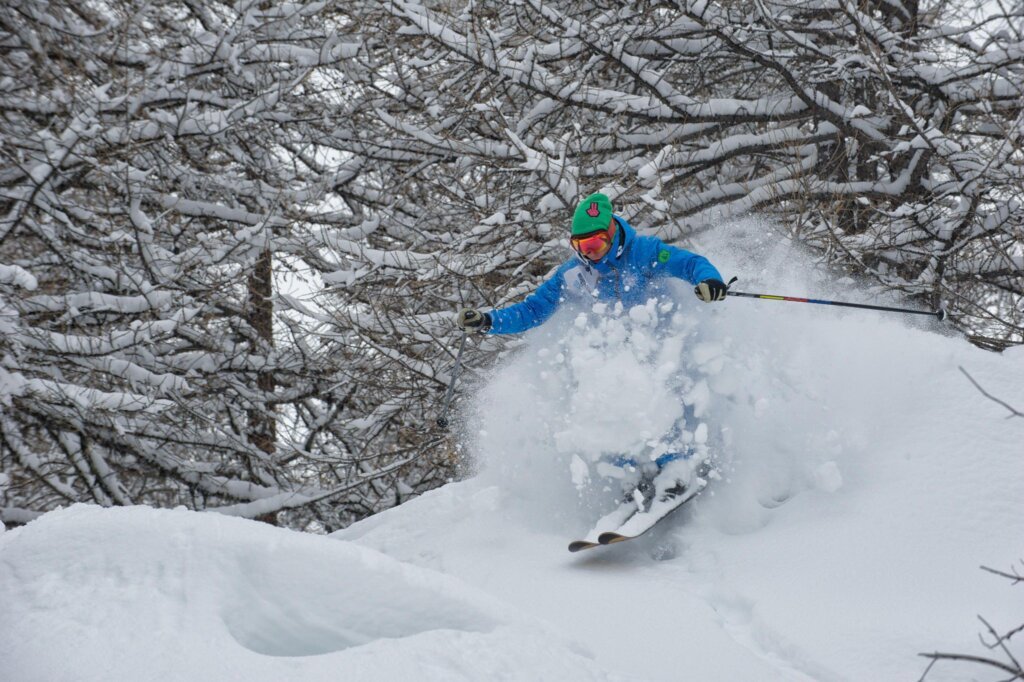
The Wrap-Up: Off-Piste Skiing | The Ultimate Guide
Skiing off-piste is an exhilarating experience, but it’s important to keep safety in mind. Make sure you equip yourself with the right gear and knowledge. With that being said, if you’re looking for a unique and thrilling skiing experience, off-piste skiing can’t be beaten! Just remember to always be aware of your surroundings and always ski within your abilities.

